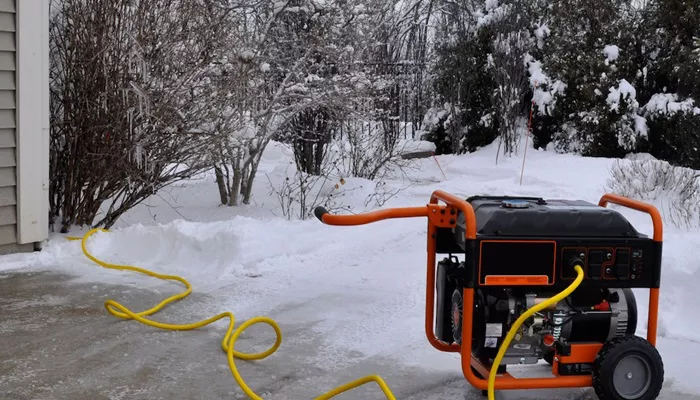When the power goes out, a home generator keeps your essential appliances running. But choosing the right generator depends on one key factor: wattage. Picking a generator with too little power means your appliances won’t work. Too much power, and you’re wasting money on an oversized unit.
This guide explains how to calculate the right wattage for your home generator. We’ll cover basic electrical terms, how to measure appliance power needs, and tips for selecting the best generator size.
Understanding Watts, Volts, and Amps
Before calculating your generator needs, you must understand three electrical terms:
Watts (W) : Measures power consumption. This tells you how much electricity an appliance uses.
Volts (V) : Measures electrical pressure. Most homes use 120V or 240V.
Amps (A) : Measures electrical current flow.
The relationship between these is simple:
Watts = Volts × Amps
For example, if a fridge runs on 120V and draws 5A, its wattage is:
120V × 5A = 600W
Types of Generators: Portable vs. Standby
Generators come in two main types:
Portable Generators (3,000W – 10,000W)
- Best for powering a few appliances during short outages.
- Must be manually started and refueled.
- Typically run on gasoline or propane.
Standby Generators (7,000W – 20,000W+)
- Permanently installed and automatically turn on during outages.
- Can power an entire home.
- Usually run on natural gas or propane.
- Your wattage needs will determine which type is best for you.
Calculating Your Home’s Power Needs
To find the right generator size, follow these steps:
List Essential Appliances
Identify which devices you need during an outage. Common essentials include:
- Refrigerator (600W – 800W)
- Freezer (500W – 700W)
- Lights (60W – 100W per bulb)
- Sump pump (800W – 1,500W)
- Furnace fan (700W – 1,200W)
- Microwave (1,000W – 1,500W)
- TV (100W – 400W)
- Laptop (50W – 100W)
Check Starting vs. Running Watts
Some appliances need extra power when starting up (surge watts). For example:
- A fridge may use 600W running but 1,800W starting.
- An AC unit may use 1,500W running but 3,000W starting.
- Always account for the highest wattage (starting watts) when sizing a generator.
Sample Generator Sizes for Different Homes
Small Apartment (3,000W – 5,000W)
- Powers fridge, lights, fan, TV, and phone charger.
- Best for short outages.
Medium House (7,000W – 10,000W)
- Runs fridge, freezer, furnace, lights, microwave, and a few outlets.
- Good for longer outages.
Large House (12,000W – 20,000W)
- Powers almost everything, including central AC, water heater, and multiple appliances.
- Requires a standby generator.
Tips for Choosing the Right Generator
Prioritize Essentials : Don’t try to power everything. Focus on critical appliances.
Consider Fuel Type : Gasoline is common but goes bad quickly. Propane lasts longer.
Automatic vs. Manual : Standby generators turn on automatically but cost more.
Future-Proofing : If you plan to add more appliances later, buy a slightly bigger generator.
Conclusion
Choosing the right generator wattage ensures your home stays powered during outages. Start by listing essential appliances, checking their starting watts, and adding them up. A 5,000W – 7,500W generator works for most homes, but larger houses may need 10,000W or more.
By following these steps, you’ll pick a generator that’s powerful enough—without overspending. Stay prepared and keep your home running smoothly, no matter what happens to the grid.

